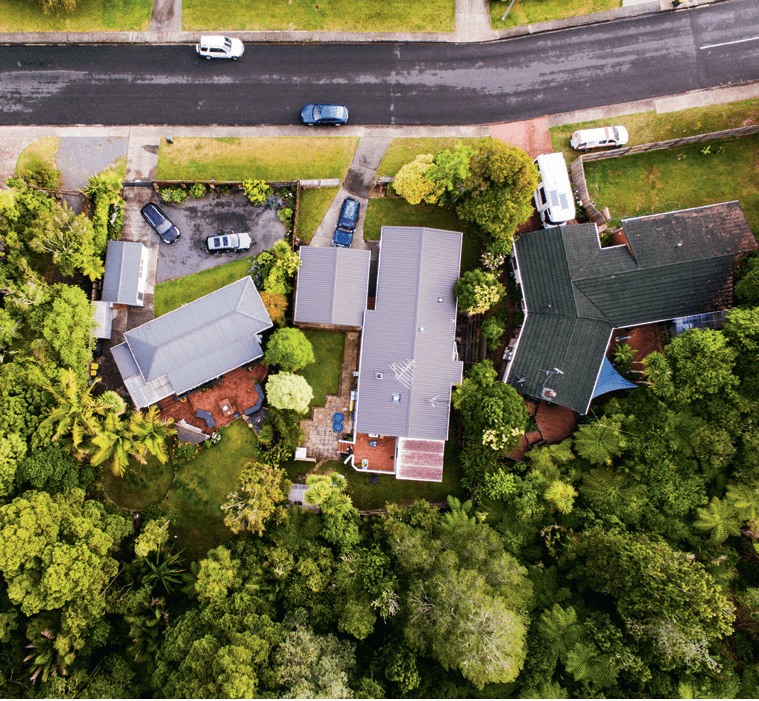
The Great Cross-Lease Conversion
Wynn Williams partners Shane Campbell and David Haigh outline the change to fee simple.
1 October 2021
While there have been calls for a law overhaul allowing owners of these titles to be able to convert them to far more desirable, cleaner fee simple titles, little has happened at a political level.
Cross-leases were originally a workaround on subdivision restrictions, and provide a standard-form set of land covenants between neighbours.
In small developments, they are often preferable to unit titles, especially given the lack of clarity in many areas of unit title law.
Cross-lease properties can be cheaper for investors to buy and they make good rents, however, there are restrictions on what can be done in terms of making extensions or alterations. It gives neighbours a measure of control as the property owner wanting to do work on their property has to get the neighbours’ consent.
Now many cross-lease title holders want to convert their properties to fee simple. Law firm Wynn Williams partners Shane Campbell and David Haigh say the cost of the conversion should be considered against the benefits.
“All other things being equal, a buyer is likely to pay more for a fee simple property than a cross-lease property,” says Campbell.
The Property Institute of New Zealand has estimated that sale prices in Auckland particularly may be 7-18% higher for a fee simple property than for a cross-lease title.
A fee simple title is the closest ownership structure we have to absolute ownership of land in New Zealand, says Campbell.
It permits the owner of the fee simple title the most freedom to do what they want. This is subject to few restrictions imposed by the Crown, including under the Resource Management Act 1991, the Atomic Energy Act 1945, the Crown Minerals Act 1991, the Ngai Tahu (Pounamu Vesting) Act 1997 and other legislation.
A cross-lease involves a situation where two or more owners jointly own the fee simple estate in share, generally – but not always – proportionate to the amount of land they have use of.
All joint owners of the fee simple then grant a “perpetual” lease – usually 999 years – of smaller parts of the land to each respective leasehold owner. “The effect of this, says Campbell, is that when you purchase a property you lease your share of the land from all owners of the fee simple estate, of which you are one owner of.”
Cross-leases were developed in the 1950s-1960s as a method of circumventing restrictive subdivision rules at the time. A lease of this kind is now a deemed subdivision under the Resource Management Act 1991. It came with the benefit of a practical subdivision without needing to comply with previous restrictive planning rules. However, it also came with one significant downside; a cross-lease significantly limits the use to which you can put your property, without agreement of the other land-owners.
Haigh says converting cross-lease properties to fee simple is now common, particularly in Auckland where the property values generally escalate as a result.
“Cross-lease conversion is also a good alternative if there is a defective flats plan that needs to be rectified. Such a conversion involves the consensual destruction of the leasehold interest – all owners must agree – and replacement with fee simple estates. It involves two streams of work, being surveying and legal.”
In The Process In Summary
1. Take an initial survey and measure up of the property and prepare a plan showing the subdivision. You will need to confirm that this plan is correct.
2. Make an application to the council for the subdivision approval. The nature of this application will differ depending on the nature and status of the particular subdivision and allotment size under the council’s district plan.
3. Easements, agreements for sale and purchase and other documents are prepared. The easements are required for access and for services, depending on the layout of the property.
4. The site is pegged with survey pegs and the surveyor prepares the eSurvey dataset.
5. An application is made for approval of the survey plan under s223 of the Resource Management Act 1991 to ensure the eSurvey plan matches the initial survey plan.
6. The eSurvey dataset is loaded into Landonline, New Zealand’s online system for transacting dealings with land.
7. Once the plan is approved, it is lodged with LINZ.
8. An application is made under s224 of the Resource Management Act 1991 for the survey plan to be deposited. Some physical work may be required before the survey plan can be deposited under s224.
9. A lawyer will deal with issues with your bank (mortgagee); with paperwork needing to be signed, including easements; and the new titles are requested from LINZ.
10. You are now the owner of a fee simple title.
Haigh says there is no blanket estimate for the work, however, a budget would be not less than $20,000 across the surveying and legal work and may be more depending on the professionals chosen.


